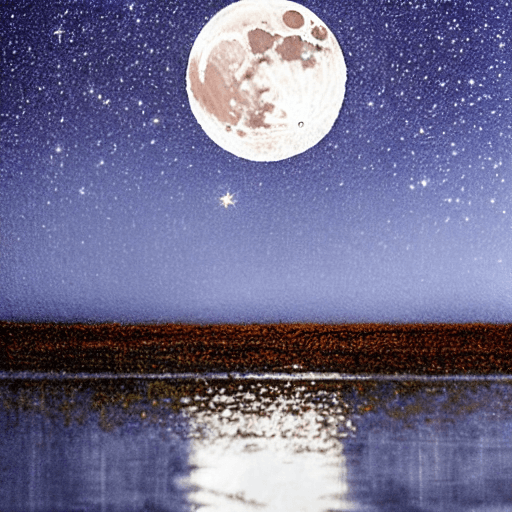How is the moon illuminated?
The moon has been a source of fascination for humans since the beginning of time.
How does it shine? Why is it different colors sometimes?
Allow us to illuminate you on how the moon is illuminated and why its appearance changes over time!
The moon is illuminated by the sun.

Explain It To A Child
The moon is illuminated by the sun. The light from the sun reflects off the moon’s surface and we see this when we look at the moon.
The amount of light that is reflected depends on the angle of the sun’s rays and the surface of the moon.
The sunlight reflects off of the moon and casts light onto the earth.
How is the moon illuminated?
The moon is illuminated by the sun. As the sun’s rays hit the moon’s surface, some of the light is reflected back into space.
This is what we see when we look at the moon. The amount of sunlight that is reflected depends on the angle of the sun’s rays and the surface of the moon.
For example, when the sun is high in the sky, its rays hit the moon directly, and more light is reflected.
However, when the sun is low on the horizon, its rays hit the moon at a different angle, and less light is reflected.
The amount of sunlight that is reflected also depends on the surface of the moon.
For example, smooth surfaces reflect more light than rough surfaces. This is why we can see different “phases” of the moon, depending on how much of its surface is lit up by the sun.
How much of the moon is illuminated?

The amount of the moon’s surface that is illuminated depends on the relative positions of the sun, Earth, and moon.
When the sun, Earth, and moon are lined up in a straight line, we see a full moon. This alignment occurs once per month.
During a full moon, the entire face of the moon is lit up by sunlight reflecting off of the lunar surface.
At other times during the month, we see a partial or crescent moon. This happens when the sun, Earth, and moon are not aligned in a straight line.
When this happens, only part of the lunar surface is lit up by sunlight, resulting in a partial or crescent moon.
Why is the moon have different colors at different times

As the moon orbits around Earth, it goes through different phases. During a full moon, the entire face of the moon is illuminated by the sun.
However, during other phases, only a portion of the moon is lit up.
As a result, the amount of sunlight that reflects off the moon can vary significantly. This can cause the moon to appear to be different colors at different times.
For example, during a full moon, the bright sunlight can make the moon look pale white or even blue.
However, during a new moon, when only a thin crescent is illuminated, the light reflecting off the surface can appear red or orange.
The changing colors of the moon are just another example of how this celestial body is constantly in flux.
Why does the moon have different phases?
The moon has different phases because of the way the sunlight hits it as it orbits around Earth.
The side of the moon that faces the sun is always lit up, but we can only see part of that side from Earth at any given time.
As the moon orbits, we see more or less of the lit-up side, and this is what gives us the different phases of the moon.
When we can see just a thin sliver of the lit-up side, this is called a crescent moon. A half-moon is when we can see half of the lit-up side, and a full moon is when we can see the entire lit-up side.
Is one side of the moon always lit?
The Moon is in orbit around Earth and completes one full rotation every 27.3 days.
This is the same amount of time it takes to complete one full revolution. Therefore, the Moon keeps the same side facing Earth at all times.
The far side of the Moon, which faces away from Earth, is popularly known as the “dark side of the Moon.” However, this name is a misnomer, as both sides of the Moon experience day and night.
The only difference is that we never see the far side of the Moon because it is permanently turned away from us. So, while one side of the Moon is always lit by the Sun, both sides experience a full cycle of light and dark.
Why does the Moon have no light of its own?
The Moon is a barren, airless, and lifeless place. It has no light of its own and is only visible because it reflects the light of the Sun. The Moon’s surface is covered in craters and is constantly bombarded by meteorites.
It has no atmosphere to protect it from the hostile environment of space. The lack of an atmosphere also means that there is no weather on the Moon. Temperatures can range from 100 degrees Celsius in the daytime to -173 degrees Celsius at night.
Despite these harsh conditions, the Moon still has a profound impact on life on Earth. It regulates our planet’s tides and our day-night cycle. It also provides a unique setting for scientific research and exploration.
Thus, the moon is illuminated by the sun and it has phases because of how the sunlight hits it as it orbits Earth.
Article Sources
Jacks of Science sources the most authoritative, trustworthy, and highly recognized institutions for our article research. Learn more about our Editorial Teams process and diligence in verifying the accuracy of every article we publish.
